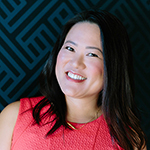I’ve been thinking a lot lately… how exactly do we go about raising mixed-race kids with a healthy sense of identity? Sure, there are the general things we do to be mindful of multiple cultures or racial backgrounds in our daily lives, but sometimes flash-points show us the need for acute discussions. For example, the recent mass murders of UC Santa Barbara students in Isla Vista and the self-loathing of being half-Chinese that was revealed in gunman Elliot Rodger’s manifesto.
Over at AAPI Voices, I wrote a piece called Why the APA Community Needs to Support Our Mixed-Race Sons. Here’s an excerpt:
While most of the headlines have focused on Rodger’s wish to avenge women—conventionally beautiful blonde, white women whom he feels are out of his reach—I am most interested in how his inability to reconcile masculinity and his multiracial Asian identity seems to have led him to seek sexual control over women. Just as parents of mentally ill sons watched in horror as details of Adam Lanza’s life were revealed after the Sandy Hook shootings, I find myself tracing the dots that started with a nine-year-old half-Chinese, half-white Elliot Rodgers begging his parents to dye his hair blond (they indulged him) and ended with seven college students dead, including Rodgers.
I have no particular reason to worry that my sons will become mass murderers, but as Asian Pacific American parents, we can’t assume our families are immune to these problems, either. After all, three young Asian American men lost their lives and intricately woven into the killer’s story is his deep dissatisfaction with his feelings of racial inadequacy. Along the way, there were clues: comments left in chat rooms criticizing Asian and black men who had managed to achieve the symbol of masculinity he so desired – the companionship of a white woman.
While problems of self-esteem—and its evil twin, self-loathing—are know no racial boundaries, they can manifest themselves differently for mixed-race Asian youth. And while Rodgers was reportedly under the care of multiple therapists, I’m not sure that every mental health professional has the perspective to identify the stages of identity development that are unique to multiracial individuals. According to resources from Cal State Pomona, the first stage of the Minority Identity Development Model is the Pre-Encounter stage, in which a person is “programmed to? perceive and think of the world as being non-minority or anti-minority and act in ways that devalue their minority development.”
Thien-Kim Lam writes We Need a Village to Raise Mixed Race Children at I’m Not the Nanny:
I can teach my kids that they are beautiful and their mixed race heritage is to be celebrated, but how long can I fend off media and societal prejudices? My husband and I do our best to raise strong, confident, and loving children before sending them out into the world. But we need everyone to raise their children to celebrate diversity, no matter what your family’s racial make-up or cultural heritage.
And although this is not specific to Asians or hapas, Grace Biskie has a poignant post about her mixed-race son not wanting to attend a black church. This is a very brave and real post, and the discussion surrounding it shows just how much trouble some people have with multiracials having the agency to choose how to ethnically identify. From her post My Biracial Son Said ‘I Don’t Like Black People’ on BlogHer:
When we pulled into the parking lot on Mother’s Day, eight and a-half year old Ransom sighed.
“Ugh. Mama, I don’t want to go this one. I wanted to go to Daddy’s (white) church!”
Rhysie, who is four and a-half, followed suit. “Yeah, Mama. I didn’t want to go to this one.”
I lug them out of the car, pontificating about having a good attitude and being thankful for all things blah blah blah when I realize I need to tell them the truth.
“Look boys, it’s good for Mama to be around other black people. Mama needs more black people in her life.”
“I don’t like black people!” Rhysie says in a huff, stomping his foot for good measure.
So many tough, important conversations to be had as our kids grow up. I hope you’ll take a few minutes to check out these links and leave a comment below if you have any thoughts to share.


I’m 53, half Tawainese and half White, and grew up in Minnesota. Our environment was almost totally white, and I struggled to be as “white” culturally as everyone else. My sisters and I were sometimes harassed about our different appearance, and older people often asked things like “where are you from?”, or assumed I was the new foreign exchange student. In 1991 I moved to the DC metro area, and was so struck by the fact that people no longer saw me as “different” or someone that didn’t fit in. There were people from so many different countries and backgrounds here, and your ethnicity was perceived as more interesting than being just another white person.
I’m happy that my two daughters have grown up in this environment, and although only one quarter Tawainese, they celebrate that fact, and love to surprise people with their Asianness. They also have the advantage of knowing lots of people with mixed-race backgrounds, and don’t seem to think it’s anything but a positive. I wonder, especially after the Santa Barbara shootings, how my experience would have been harder as a boy? I see the Asian boys in this area struggling much more than the girls.
I find sometimes it’s easier to be a non-white person when there are not a lot of other minorities around. It seems like when there are a critical mass of Asians (or black, Latinos, etc) the majority tends to stereotype more – or perhaps feel more threatened.
I’d be interested in hearing your observations of what kind of struggles you’ve seen Asian boys dealing with, too. Thanks for stopping by ;)
http://www.calgaryherald.com/Police+officer+charged+city+worst+mass+murder/9739998/story.html Son of a senior, local Caucasian police officer and hisAsian wife, shot 5 of his university friends. I live in this city…
You know even 100% Asian, black can fall into self-loathing.. I don’t mean to broadbrush this…after all I have 4 half-Chinese Caucasian nieces and nephews from 2 sisters.